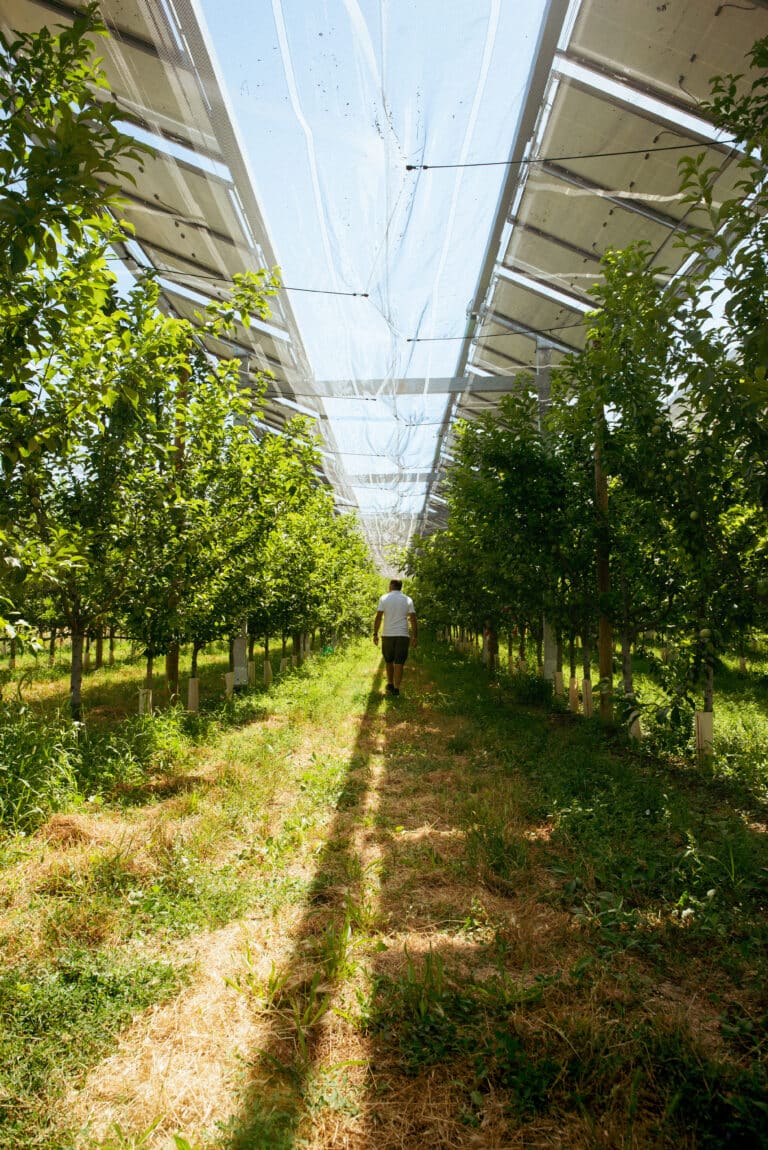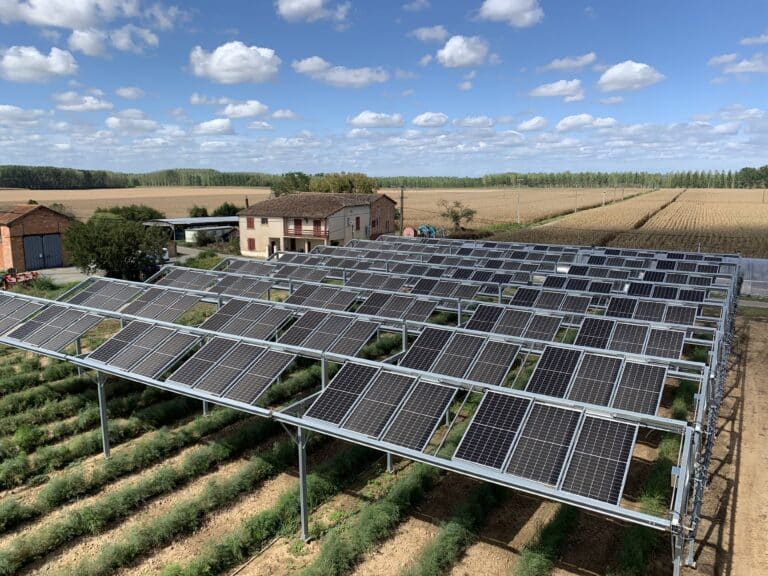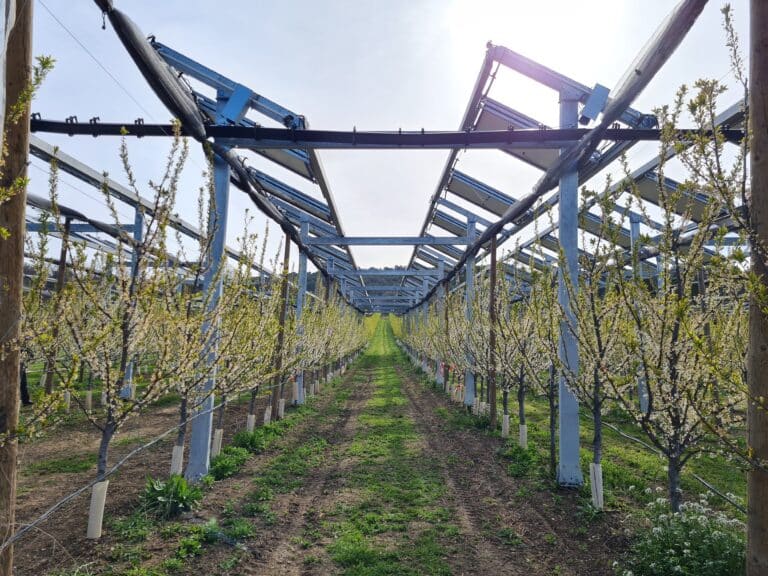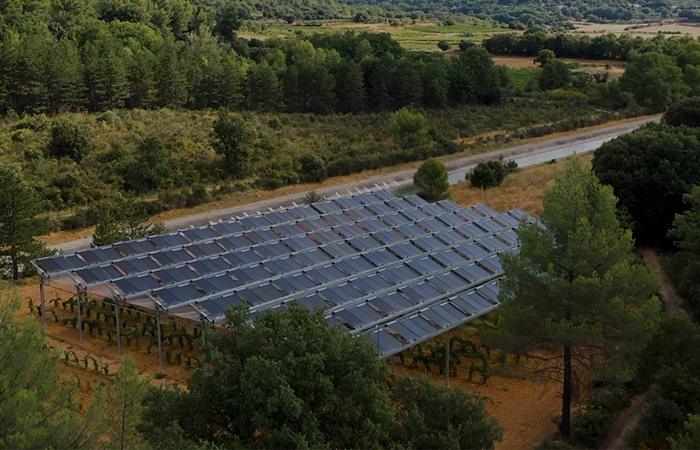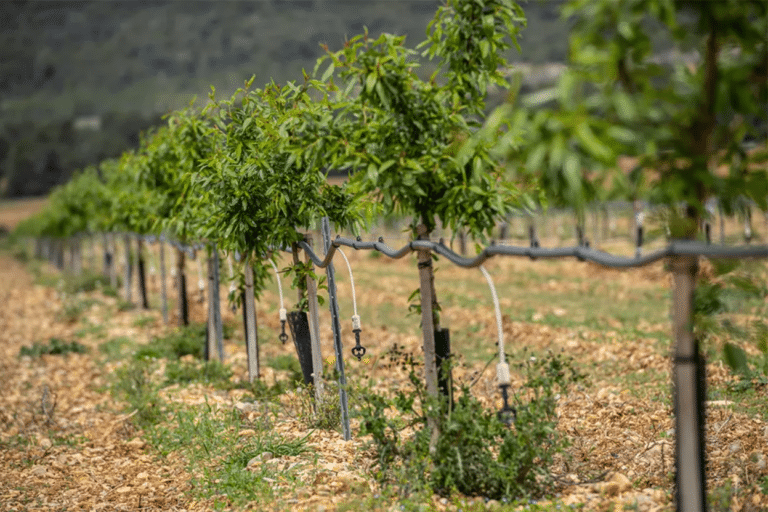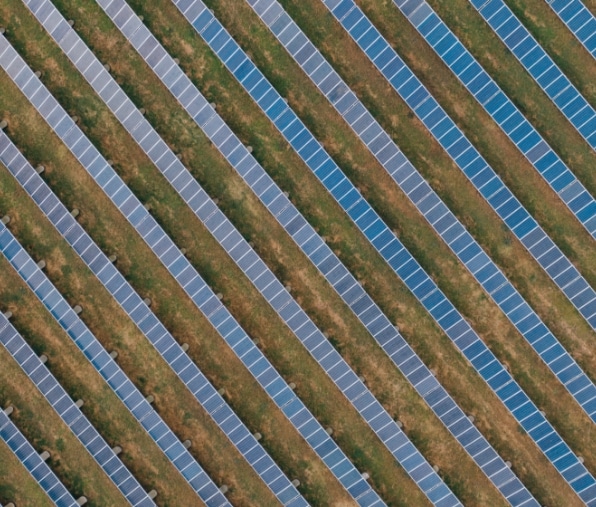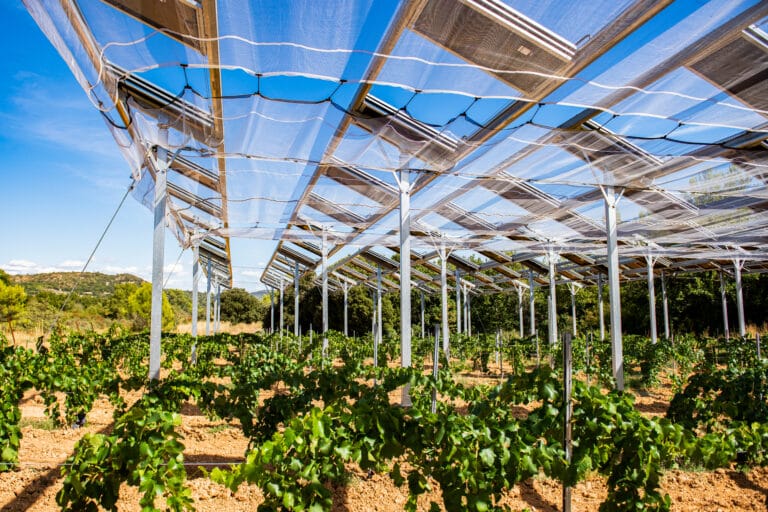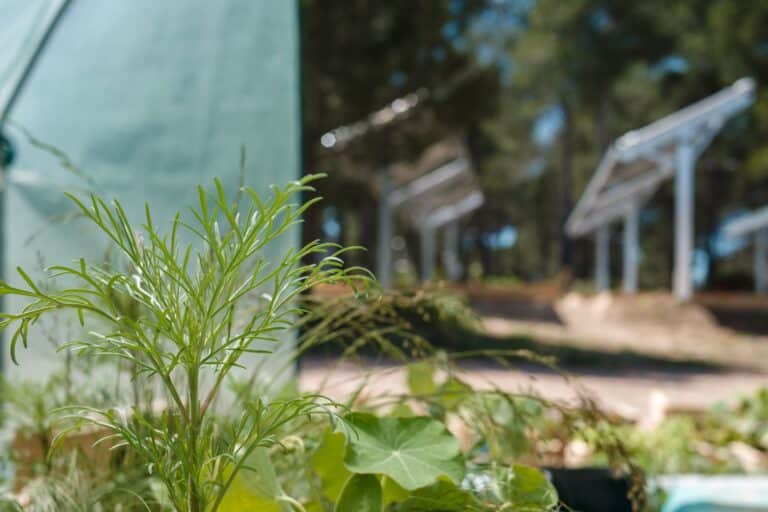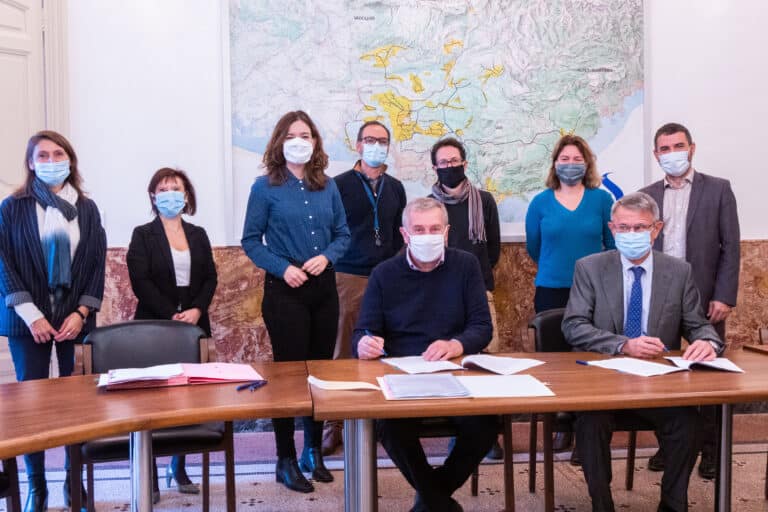The climate change Climate change is bringing new challenges, ones that cattle and dairy farms were not prepared to face before.were or little faced previously. In fact livestock are increasingly exposed to high temperatures, stressful climatic conditions which have a direct impact on their well-being, their environment, and and, more generally the farm farm. In this article, we take a look at the stresses affecting your animals, theeffect effect has on production and operations, as well as the solutions that l'agrivoltaics can provide.
What is heat stress and what impact does it have on farms cattle ?
Animals are particularly affected by rising temperatures, especially during the summer months. It is during these temperature peaks that heat stress occurs, indicating an animal's inability to maintain its thermoregulatory capacities.
It would appear that cattle generally suffer thermal stress at temperatures above 25°C (Eigenberg et al., 2003). The thermal comfort of animals does not depend solely on air temperature, as it interacts with other climatic parameters: humidity, wind speed and solar radiation. Together, these parameters define the temperature felt by the animal.
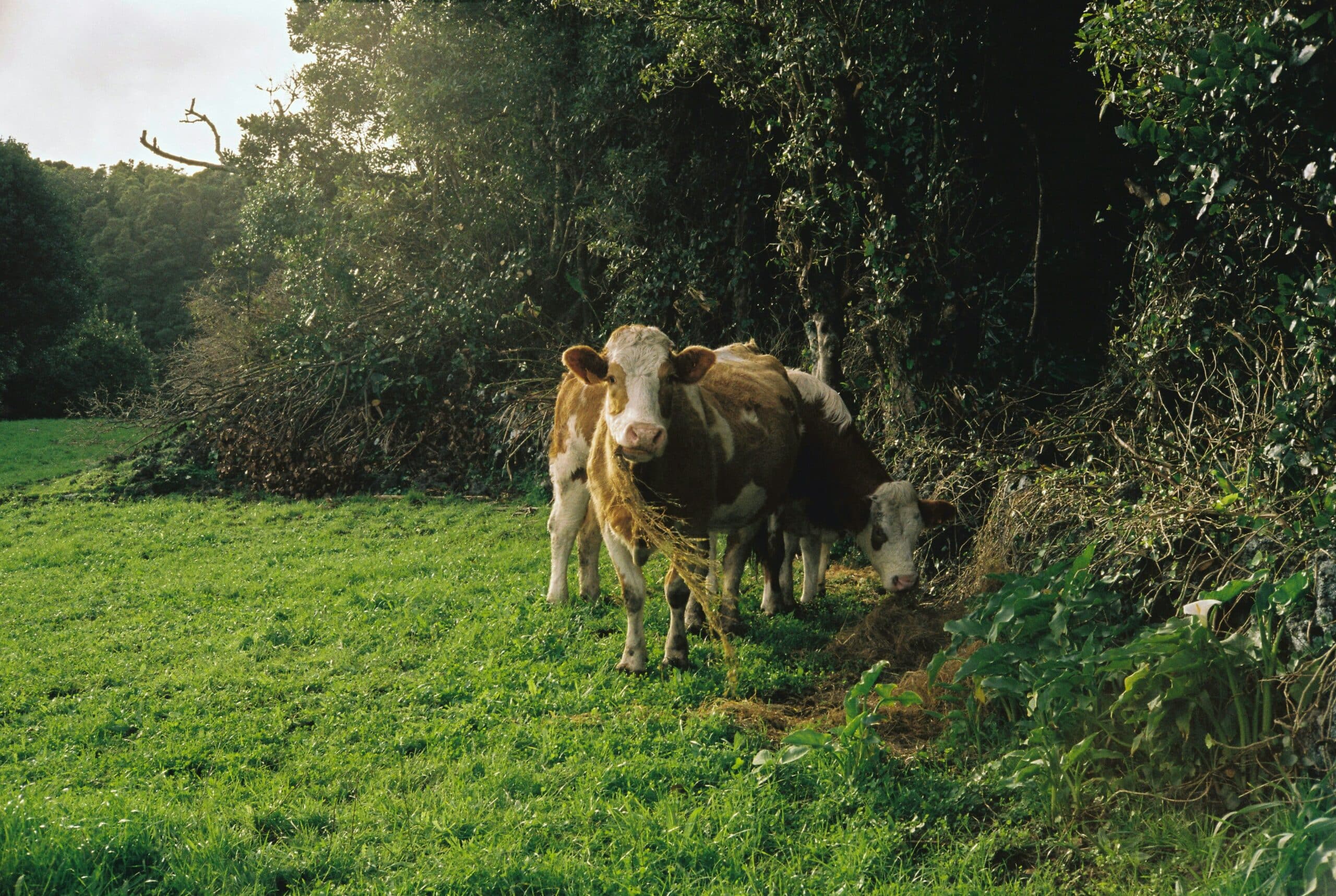
In addition, certain factors intrinsic to the animal (breed, age or diet) also influence sensitivity to climatic stress. Prolonged or repeated exposure to heat stress has an impact on cattle health, behavior as well as reproductive and production capacity.
The various impacts on cattle farms
Impact on cattle health, behavior and reproduction
With regard to health issues, severe heat stress can reduce the effectiveness of the immune system and, in the most serious cases, lead to the death of the animal. In particular,ANSES highlighted a 24% excess mortality in cattle during the 2003 heatwave and a 12% excess during the 2006 heatwave (Morignat et al., 2018).
On the other hand, a change in the animal's behavior or condition can be observed. Indeed, to reduce the effects of thermal stress, cattle increase the time spent standing compared to lying down, to increase the skin surface in contact with the air and maximize evaporation. These behaviors can indirectly generate podal lesions or laminitis (Allen et al., 2015). In addition, to protect themselves from dehydration in hot weather, cattle drink up to 20% of their body weight, compared with 10% the rest of the time (Shephard & Maloney, 2023).
Thermal comfort also affects reproduction, with a drop in conception from 31% to 12% when cows are subjected to moderate to severe heat stress (Schüller et al., 2014)
Impact on milk and meat production
Climate change has a direct impact on the quantity and quality of cow's milk production. Milk protein levels, and in particular casein levels, are lower at high temperatures, generating downstream repercussions on cheese production (Cowley et al., 2015).
In 2015, a particularly hot yearthe loss in Europe is estimated at between 70 and 550 kg of milk per day for a herd of 100 dairy cows due to heat stress. Under optimal conditions, this herd would produce an average of 1,500 kg of milk per day.
Finally, heat stress is thought to influence weight and therefore meat production during periods when animals reduce their food intake.
L'impact on thefarm business
Lhe impacts mentioned above result in ddirect repercussions on the company's business and sustainability dand whether in terms of quantity and quality of final output, meat, milk or cheese. It is therefore necessary, for breeders, to find solutions.
Some avoidance measures already in place. In mountainous areas, estivation, i.e. the raising of animals to higher altitudes, is a highly effective means of adapting to hot temperatures: a drop in temperature of around 6°C is obtained for an elevation of 1,000m. In other areas, the animals are housed in buildings. They to protect them from unfavorable weather conditions (very hot weather), but also because the grassland is burnt.
The cattle have nothing to eat if the farmer doesn't deliver forage to the plots. This reorganization thus necessarily entails the purchase of concentrated feed, or the anticipated use of forage stock, and impacts on annual operating costs (ONERC, 2023).
L'agrivoltaics can provide a concrete solution to these new conditions. Here's how.
The agrivoltaic solution
The principles of agrivoltaics
The aim of agrivoltaics is to create a synergy between between primary agricultural production and energy production. The benefits to agricultural production are generated by the attenuation of adverse climatic conditions, thanks to shading, and have an effect on the thermal comfort of livestock and the forage production of grassland.
The benefitsenefits provided by shading on the thermal comfort of cattle
Shading improves the animals' thermoregulatory capacities, thus reducing heat stress. Studies have in particular studies show that, sith shade, heifers move less and spend more time grazing (Mode & Aupiais, 2018). At the same time, studies show that at high temperatures and solar radiation, livestock actively seek out the sun's rays. actively to avoid direct radiation.
This shade peut be provided by agrivoltaic structures. In additionto lower theeur temperature, cattle limit ingestion and rumination and rumination, which contribute to heat accumulation. The provision of shade improves ingestion capacity, thus enabling thereby cows' health and, ultimately, their production capacity (Gaughan et al., 2010).
Thus, by improving thermal comfort for cows through the provision of shade, positive effects could be observed on herd health, meat production capacity and reproductive performance.
Operating benefits
We can see how thehe agrivoltaic systemby providing shade during certain crucial periods, generates benefits for the whole farm. The positive effects observed on the thermal comfort of the animals and grazing quality could improve production performance, thereby boosting farm income. farm.
Etudes de faisabilité et viabilité économique
L’élaboration d’un projet d’agrivoltaïsme commence par une étude de faisabilité technique, qui analyse les usages actuels du site, la topographie, les zonages environnementaux et patrimoniaux, ainsi que les possibilités de raccordement. Une étude d’impact environnemental est aussi réalisée pour évaluer les effets sur la biodiversité et définir des mesures compensatoires. À cela s’ajoutent des analyses de viabilité économique pour s’assurer du potentiel financier du projet.
Choisir la technologie agrivoltaïque adaptée
Plusieurs technologies agrivoltaïques peuvent répondre aux enjeux des exploitations bovines. La hauteur des structures sera adaptée en fonction des animaux :
- The 1V and 2V trackers, structures with rotating panels, provide dynamic shade control.
- The fixed panels provide shade for the animals while conserving soil moisture. This contributes to better grass growth and quality, and therefore better feed for the herd.
- Vertical bifacial panels create a windbreak effect and limit the drying out of the meadow.



